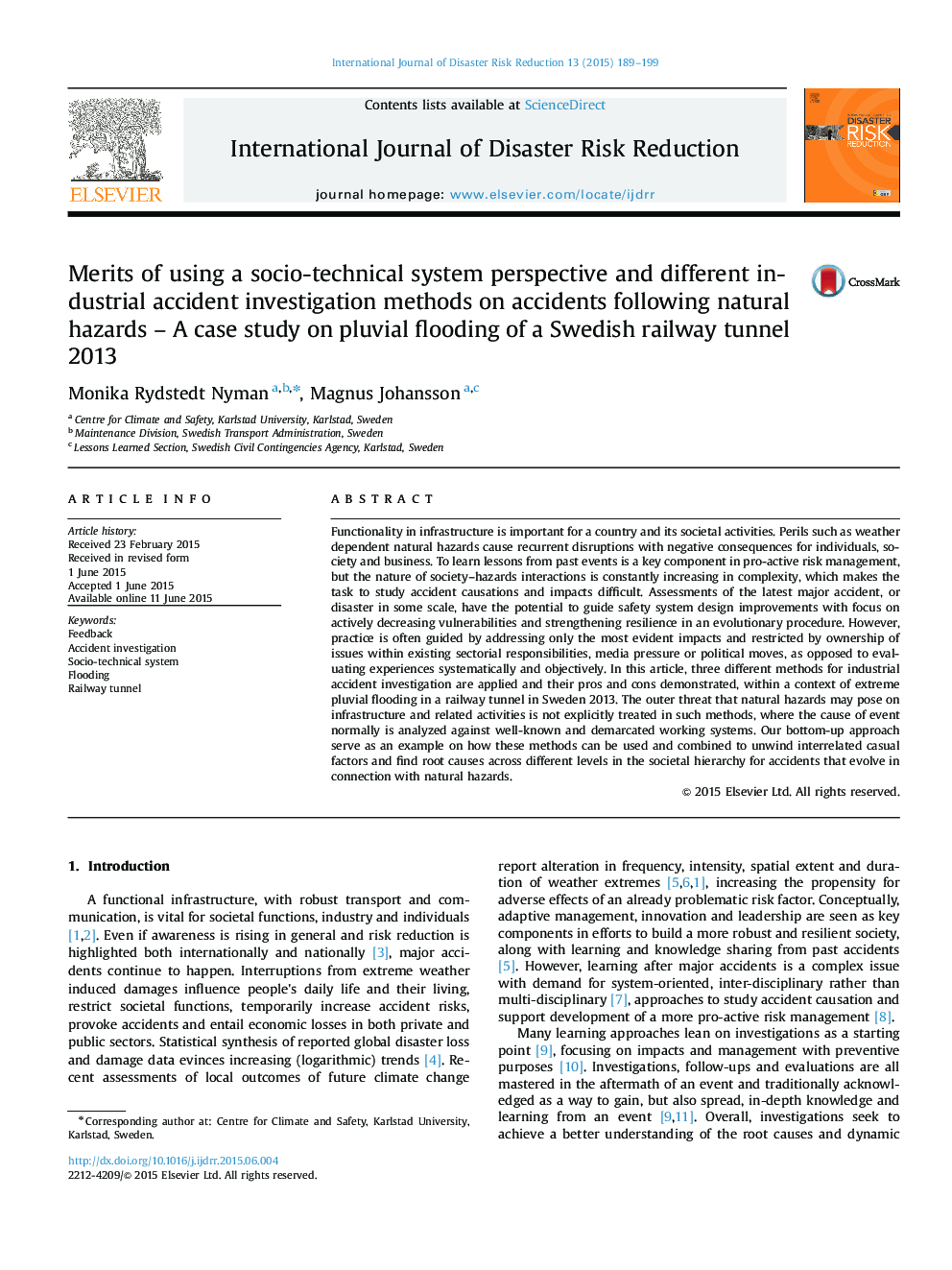| Article ID | Journal | Published Year | Pages | File Type |
|---|---|---|---|---|
| 7473143 | International Journal of Disaster Risk Reduction | 2015 | 11 Pages |
Abstract
Functionality in infrastructure is important for a country and its societal activities. Perils such as weather dependent natural hazards cause recurrent disruptions with negative consequences for individuals, society and business. To learn lessons from past events is a key component in pro-active risk management, but the nature of society-hazards interactions is constantly increasing in complexity, which makes the task to study accident causations and impacts difficult. Assessments of the latest major accident, or disaster in some scale, have the potential to guide safety system design improvements with focus on actively decreasing vulnerabilities and strengthening resilience in an evolutionary procedure. However, practice is often guided by addressing only the most evident impacts and restricted by ownership of issues within existing sectorial responsibilities, media pressure or political moves, as opposed to evaluating experiences systematically and objectively. In this article, three different methods for industrial accident investigation are applied and their pros and cons demonstrated, within a context of extreme pluvial flooding in a railway tunnel in Sweden 2013. The outer threat that natural hazards may pose on infrastructure and related activities is not explicitly treated in such methods, where the cause of event normally is analyzed against well-known and demarcated working systems. Our bottom-up approach serve as an example on how these methods can be used and combined to unwind interrelated casual factors and find root causes across different levels in the societal hierarchy for accidents that evolve in connection with natural hazards.
Related Topics
Physical Sciences and Engineering
Earth and Planetary Sciences
Geophysics
Authors
Monika Rydstedt Nyman, Magnus Johansson,
